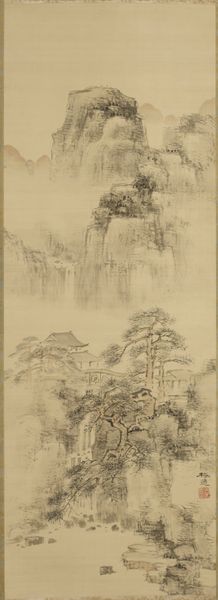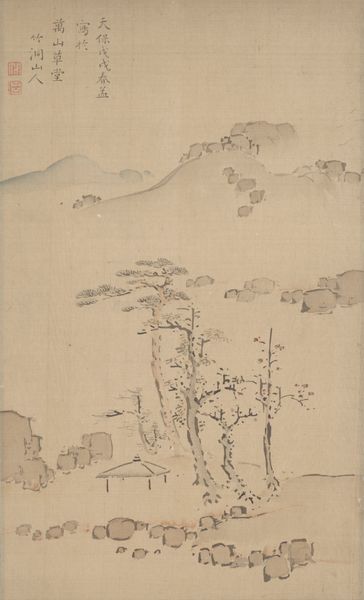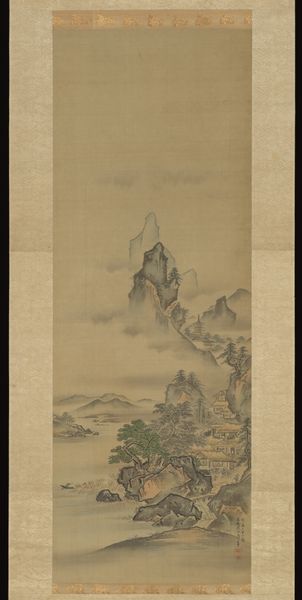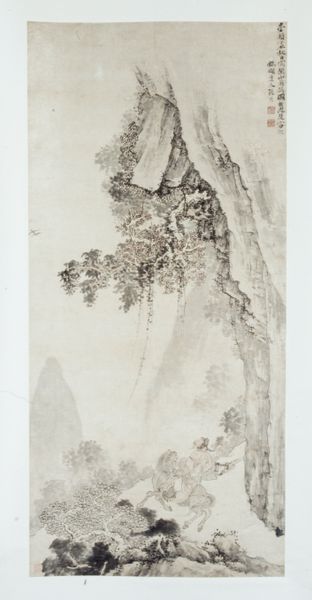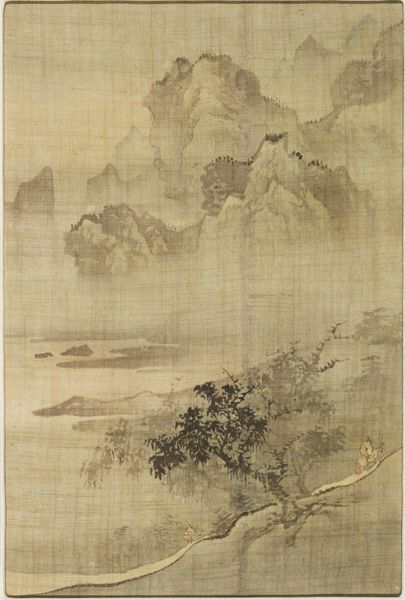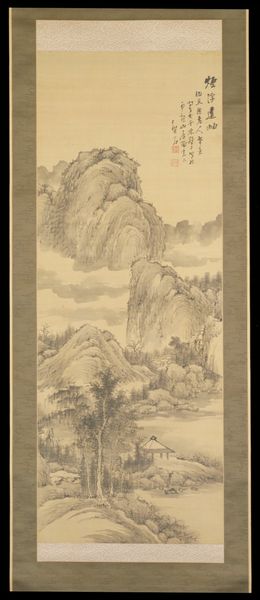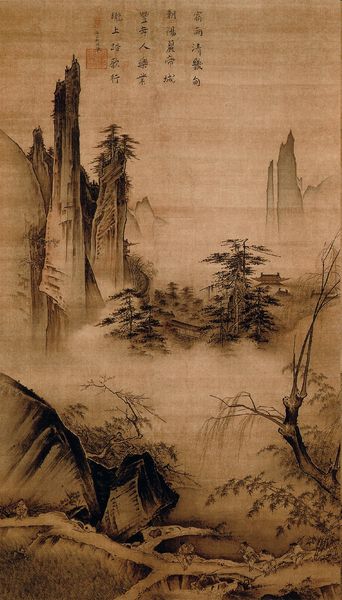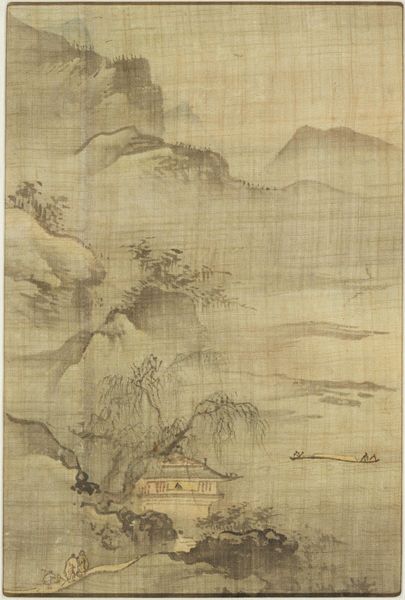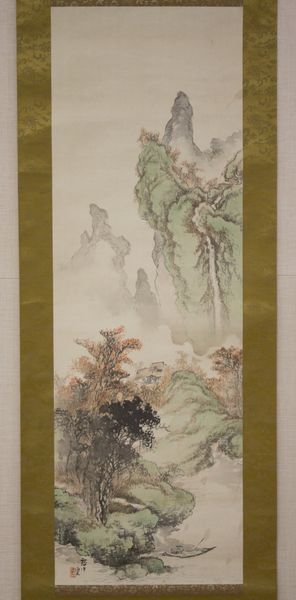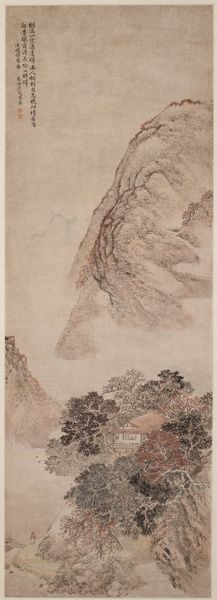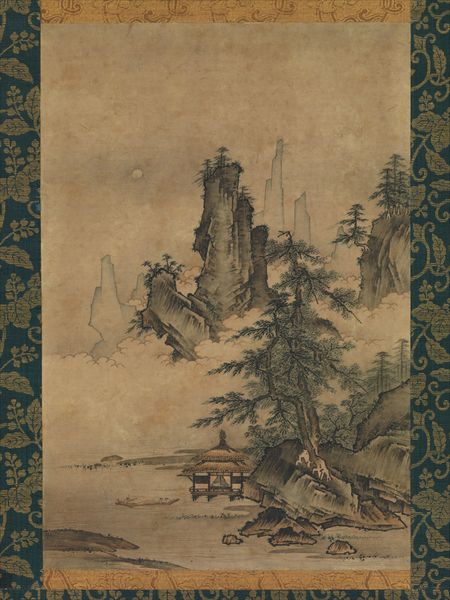
painting, paper, ink
#
medieval
#
ink painting
#
painting
#
asian-art
#
landscape
#
paper
#
ink
#
calligraphy
Copyright: Public Domain
Curator: This serene artwork, aptly titled "Landscape," dates back to the 15th century. Crafted by Oguri Sotan, it employs ink on paper to depict a captivating vista, now residing at The Art Institute of Chicago. My initial feeling is peace, with an interesting use of empty space. Editor: There's such emphasis here on the materiality of the landscape – the paper itself and the layering of ink creating depth that mimics the textures of rocks and water. Notice how the strokes capture the different qualities, the density giving substance to the architecture. Curator: Absolutely. I see the socio-political context of Zen Buddhism reflected here – this withdrawal to nature becomes almost a rejection of worldly complexities, seeking enlightenment in simplicity and natural harmony. It almost acts as a refuge. Editor: The act of using handmade paper and then creating these fine, controlled marks surely had an audience of other craftsman in mind? In addition to philosophical ideas there are a lot of social structures represented here with the architecture of labor very clearly drawn for the careful observer. Curator: I think the style points towards broader social aspirations. A painting like this also reflected on the patrons, suggesting cultivated taste. The calligraphic elements further signal literacy and high culture which was a way of defining elite status during the Muromachi period. Editor: That resonates – it prompts questions around consumption of resources as well as visual consumption of landscapes and idealized spaces and how they were experienced differently based on societal position. Curator: For me, viewing this Landscape, prompts an introspection about human roles within broader historical power dynamics, revealing intersectional spaces which is something artworks throughout the ages echo, whether consciously or subconsciously. Editor: And from a material perspective, what remains so powerful is seeing how a medium as simple as ink on paper could be a foundation upon which all these varied interpretations can be produced, allowing us new dialogues across time about production and its consumption. Curator: Indeed, appreciating its historical placement enables a richer discourse concerning identity and social agency as intertwined within its visual fabric. Editor: Yes, by tracing those original materials and their usage, a sense of immediacy comes alive from across the centuries.
Comments
No comments
Be the first to comment and join the conversation on the ultimate creative platform.
